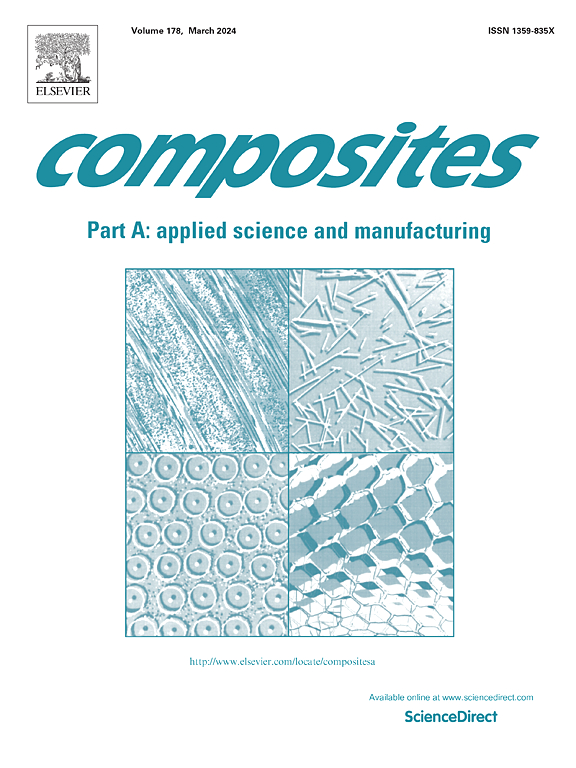Machining quality improvement through ice densification pretreatment during rotary ultrasonic face grinding SiO2f/SiO2 composite
IF 8.1
2区 材料科学
Q1 ENGINEERING, MANUFACTURING
Composites Part A: Applied Science and Manufacturing
Pub Date : 2025-03-20
DOI:10.1016/j.compositesa.2025.108878
引用次数: 0
Abstract
From the perspective of weakening the inherent preparation defects of the SiO2f/SiO2 composite, a novel hybrid machining process combining ice densification pretreatment with rotary ultrasonic face grinding (IDP-RUFG) was firstly proposed in this study to reduce the contradiction between grinding surface quality and grinding efficiency. The improvement mechanism of IDP-RUFG process on the machinability of SiO2f/SiO2 composite was analyzed from material strengthening and grinding mechanics. The grinding experiments were carried out to confirm the surface integrity improvement in the IDP-RUFG process. By comparing with the conventional RUFG surface, the maximum peak height Sp on the IDP-RUFG surface was reduced by 16.6 %∼31.4 % with the 9.1 %∼27.9 % reduction in the debonding fiber damage ratio β. The subsurface damage patterns both in IDP-RUFG process and RUFG process were characterized by fiber–matrix interface debonding, subsurface cracks, and matrix fracture. However, the subsurface damage depth during the IDP-RUFG process could be reduced by more than 40 %.
求助全文
约1分钟内获得全文
求助全文
来源期刊

Composites Part A: Applied Science and Manufacturing
工程技术-材料科学:复合
CiteScore
15.20
自引率
5.70%
发文量
492
审稿时长
30 days
期刊介绍:
Composites Part A: Applied Science and Manufacturing is a comprehensive journal that publishes original research papers, review articles, case studies, short communications, and letters covering various aspects of composite materials science and technology. This includes fibrous and particulate reinforcements in polymeric, metallic, and ceramic matrices, as well as 'natural' composites like wood and biological materials. The journal addresses topics such as properties, design, and manufacture of reinforcing fibers and particles, novel architectures and concepts, multifunctional composites, advancements in fabrication and processing, manufacturing science, process modeling, experimental mechanics, microstructural characterization, interfaces, prediction and measurement of mechanical, physical, and chemical behavior, and performance in service. Additionally, articles on economic and commercial aspects, design, and case studies are welcomed. All submissions undergo rigorous peer review to ensure they contribute significantly and innovatively, maintaining high standards for content and presentation. The editorial team aims to expedite the review process for prompt publication.
 求助内容:
求助内容: 应助结果提醒方式:
应助结果提醒方式:


